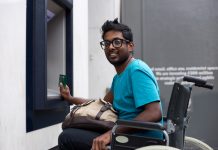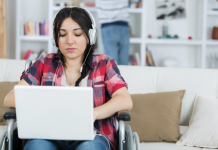There is a need to secure equal opportunities for students in online learning spaces – schools can do this by improving digital accessibility
There is no doubt that online learning has grown over recent times; the pandemic pushed forward digital learning, so it is now commonplace. However, alongside this growth, a need arose to secure equal opportunities for students who face challenges in interacting with digital content – from those with learning differences, mobility issues, sensory or social impairments, and long-term health conditions to offering an alternative learning format for students commuting or engaging with content whether on the bus or in the lecture theatre.
The number of disabled students and students with declared disabilities has grown, with 332,200 students declaring disabilities in 2019/2020 as they entered university. Over five years, this showed a growth of 46%.
332,200 students declared disabilities in 2019/2020
However, providing a virtual learning environment that is widely accessible extends beyond learners with declared disabilities. For example, learners with temporary challenges, who require different formats to meet their personal needs or are on the go using their mobile device to learn, also depend on content that is inclusive and accessible. And while universities have taken great strides to meet these challenges, we’re entering a new phase where digital accessibility must be at the core of decisions made.
Digital accessibility must be at the core of decisions made
After completing my Masters in Natural Language Processing and AI at Cambridge University, accessibility technology and tools were just emerging. As a member of the All-Party Parliamentary Group tasked with defining how European Commission accessibility standards would apply in the United Kingdom, we outlined the steps universities should take to put themselves on the path toward digital inclusivity.
Now, digital accessibility isn’t a yes or no choice for higher education institutions; there is an expectation that institutions not only offer their content digitally but that they are actively investing in the accessibility of the content in their Virtual Learning Environments (VLE) as part of their strategy. Digital accessibility is rapidly changing, and universities face real challenges in producing accessible digital content for virtual learning environments but getting it right will lift all students.
All UK Universities must eliminate discrimination since the Equality Act 2010 came into effect, advance equality of opportunity and foster good relations between different people when carrying out their activities.
Subsequently, The Directive on the accessibility of websites and mobile applications (Directive (EU) 2016/2102) and The European Accessibility Act (Directive (EU) 2019/882), referred to as the “AAD”, based on the Web Content Accessibility Guidelines (“WCAG”) framework, introduced additional digital accessibility directives for public sector bodies including institutions of higher education in a bid to grow the UK’s domestic talent pool and close disability employment and attainment gaps.

Encouraging users to report accessibility issues
The AAD requires websites to publish an accessibility statement with conformance information and ensure that all website and mobile content meets WCAG 2.0 Level AA –generally considered the standard for reasonable accessibility. The AAD also requires websites to provide users with resources for reporting accessibility issues and a link that explains the EU Web Accessibility Directive enforcement procedures.
While the way students were being taught was shifting at a breathtaking pace, the regulatory landscape was playing catch up in terms of accessibility advocacy, where the digital environment was changing at a staggering pace.
With the beginnings of infrastructure necessary for accessible digital learning now put in place at many institutions, they are now starting to trust accessibility software to provide a foundation by continuously checking for any violations of Web Content Accessibility Guidelines.
In addition, these tools have expanded the scope of what’s possible through automation. Accessibility challenges highlighted, for example, could be the lack of alternative text on an image or showing what colours would be an issue for colour-blind students.
Accessibility software and training academics
Undoubtedly, institutions will need accessibility software in the future, but training academics must also be a priority. Virtual learning material is created in an accessible way from concept through to delivery, and to do so, institutions must think about accessibility from the start point of course creation. From the outset, it’s easier to prevent accessibility issues than repair them at a later date.
One example is The University of Leeds, which provides academics with a digital accessibility checklist. Viable accessibility for digital learning doesn’t disrupt students’ workflows; it integrates well with virtual learning environments and largely fades into the background as simply something learners know and expect. Creating explicit, efficient educational content that works across devices and on smartphones will deliver better engagement and benefit all students.
Viable accessibility for digital learning doesn’t disrupt students’ workflows; it integrates well with virtual learning environments
By creating more accessible digital learning, all students will succeed, not just those who need accessibility support. Reviewing student data collected by Anthology Ally, an accessibility solution, we can see that many non-standard formats used by students without declared disabilities who use the alternative form are used by many students, not just those with declared disabilities. In addition, we can see that their format and device choices are altering as the student experience develops.
Many universities are striving ahead of digital accessibility transformation. As campuses and facilitators develop their accessibility knowledge and use new technologies, more accessible and inclusive content will lift the learning potential of all learners.
Nicolaas Matthijs is an educational technology entrepreneur, creator, enthusiast, and vice president of product management at Anthology.
Editor's Recommended Articles
-
Must Read >> How can digitisation improve student accessibility?













